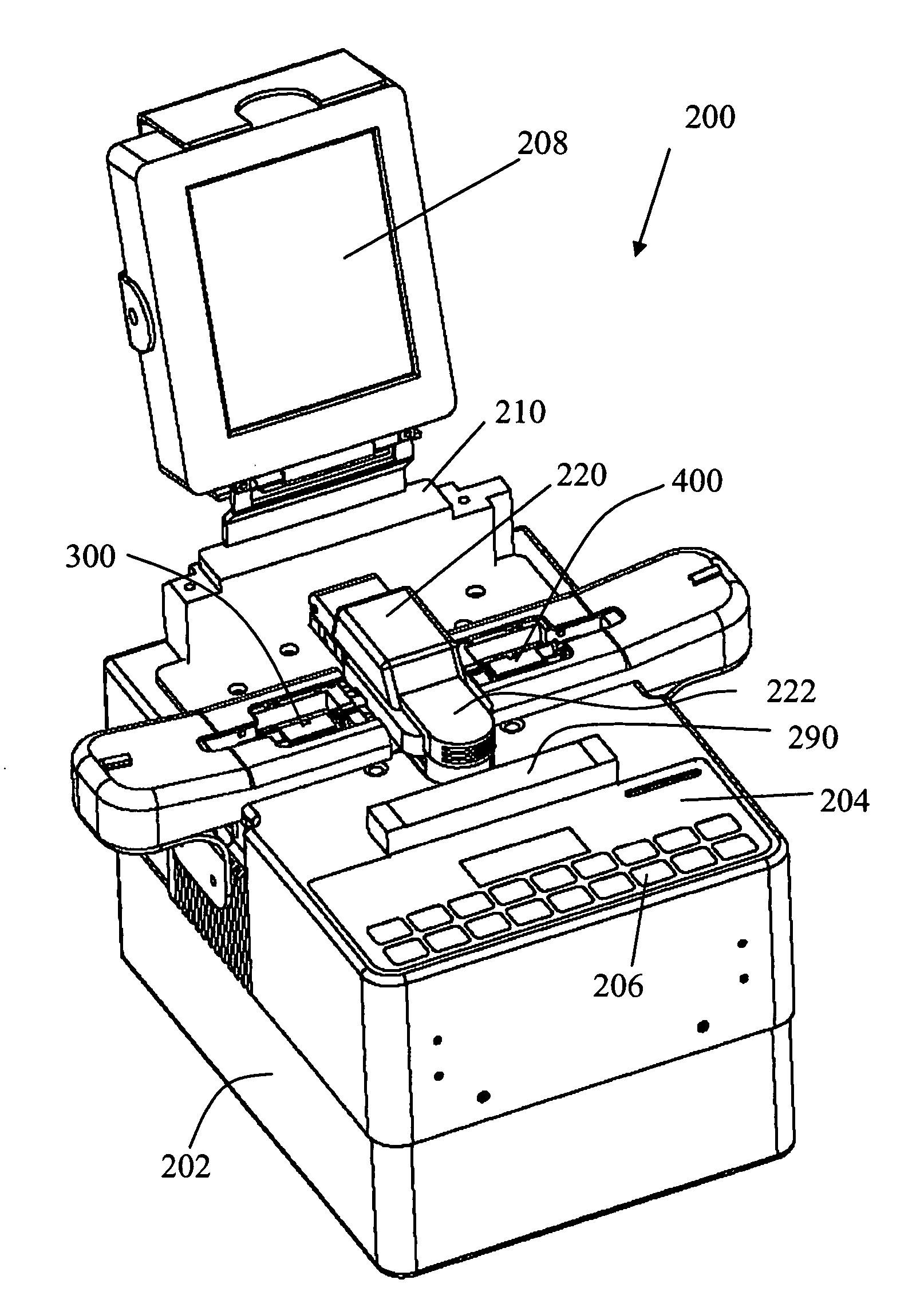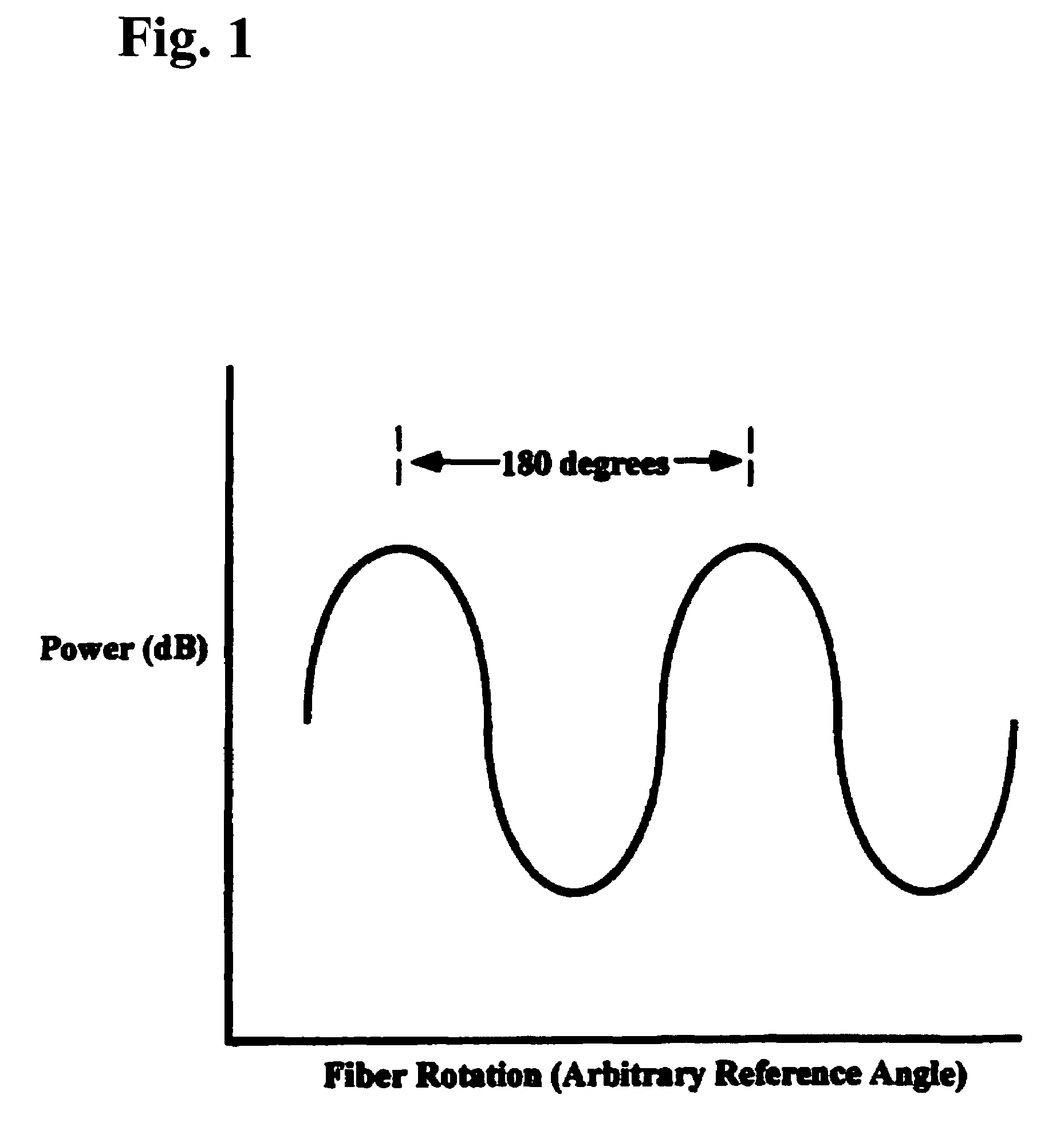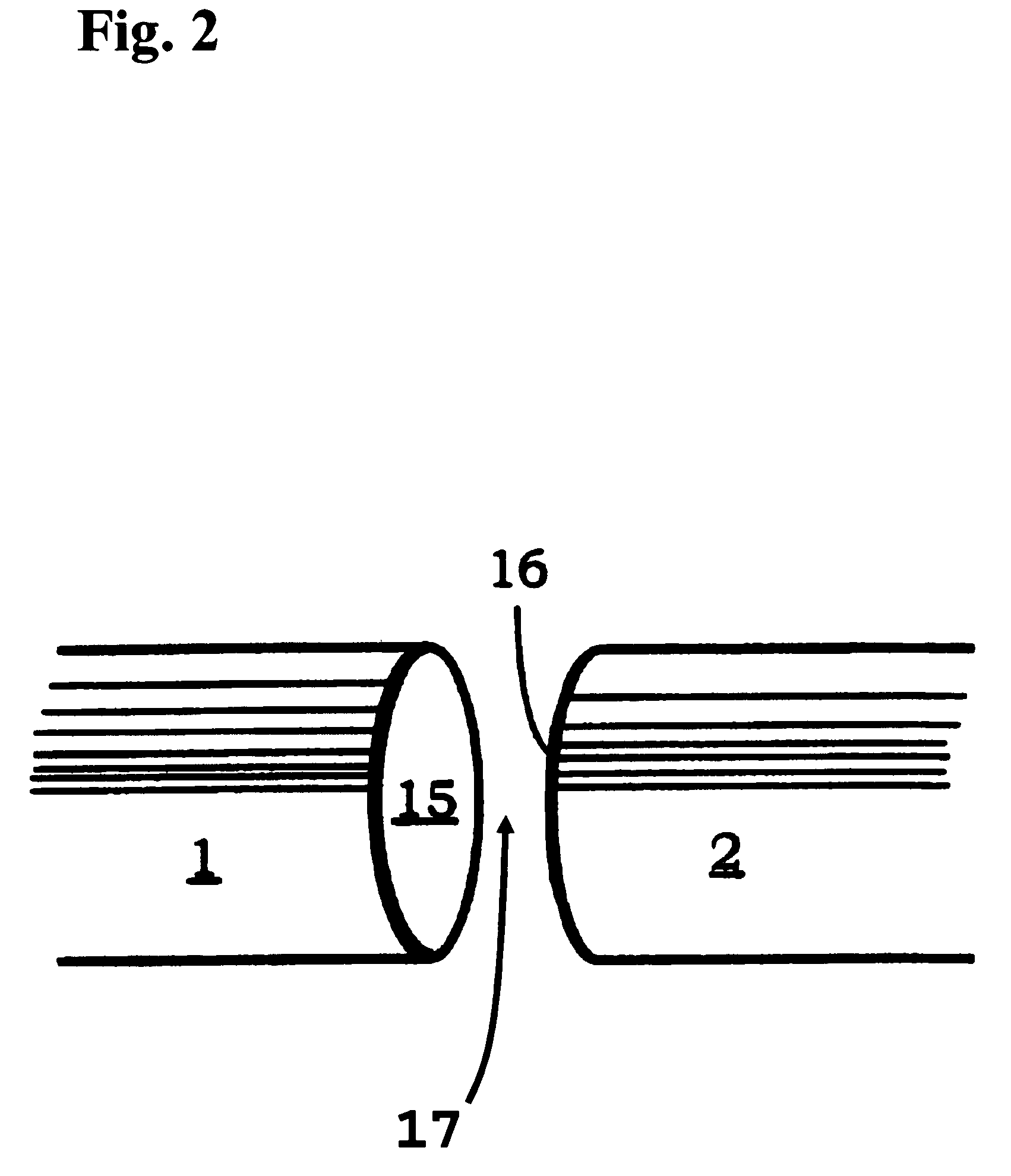System for joining polarization-maintaining optical fiber waveguides
a technology of optical fiber waveguides and polarization-maintaining optical fibers, applied in the direction of optical waveguide light guides, instruments, optics, etc., can solve the problems of large mechanical splice loss, and relatively high mechanical splice loss, so as to maximize the measured intensity signal, optimize alignment, and improve the alignment
- Summary
- Abstract
- Description
- Claims
- Application Information
AI Technical Summary
Benefits of technology
Problems solved by technology
Method used
Image
Examples
Embodiment Construction
[0048]The present invention is directed to an apparatus and system for producing a durable fusion splice between a first and a second polarization-maintaining optical fiber. The joined fiber advantageously exhibits low attenuation. Advantageously the present system employs an adaptive technique to optimize the lateral and azimuthal alignment of the fibers prior to fusion, whereby the insertion loss and mode cross-coupling of the splice are minimized.
[0049]Polarization-maintaining fibers exhibit asymmetric stresses. In most such fibers the stresses are created deliberately, as the decoupling of the two degenerate polarized modes is achieved by refractive index changes due to stress. The unequal stresses result in very different propagation constants for the two orthogonal modes, which reduce cross-coupling to a very low level, typically −20 to −30 dB. The asymmetric stresses are achieved by the use of an elliptical inner cladding layer (3M and Hitachi), a bow-tie-shaped pair of regio...
PUM
 Login to View More
Login to View More Abstract
Description
Claims
Application Information
 Login to View More
Login to View More - R&D
- Intellectual Property
- Life Sciences
- Materials
- Tech Scout
- Unparalleled Data Quality
- Higher Quality Content
- 60% Fewer Hallucinations
Browse by: Latest US Patents, China's latest patents, Technical Efficacy Thesaurus, Application Domain, Technology Topic, Popular Technical Reports.
© 2025 PatSnap. All rights reserved.Legal|Privacy policy|Modern Slavery Act Transparency Statement|Sitemap|About US| Contact US: help@patsnap.com



